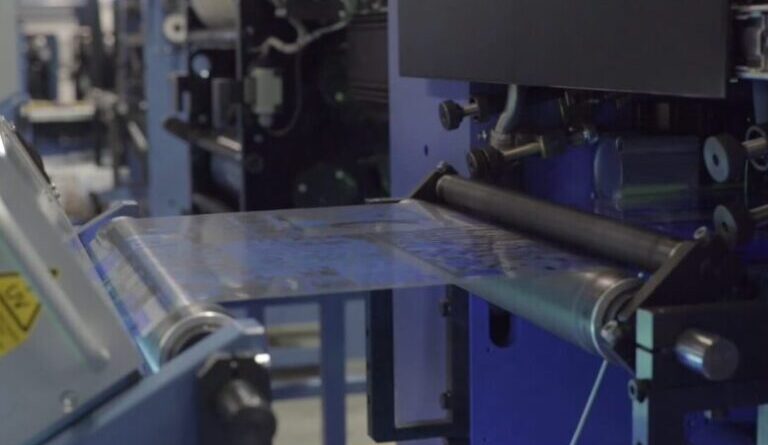Films made of different types of plastic, paper and aluminium, with increasing attention to sustainability, are the most common substrates
The flexible packaging industry is continuously expanding due to the great diversity of applications offered by this format both in the food sector and many others, with an increasingly widespread use in recent years. The versatility, the ability to adapt to any type of product, its potential as a communication element and the variety of printing options, as well as the wide range of materials it can work with, are all advantages that boost the value of flexible packaging.
Among the substrates available, there are films made from different types of plastic, paper and aluminium that can be blended to improve packaging properties, although the industry tends to explore the possibilities of mono-materials as they are easier to recycle and reuse. Sustainability is a growing value in all aspects of packaging manufacturing, labelling and printing.
The properties of flexible packaging make it ideal for the food industry, although over the last year, because of the adaptation at all levels following the Covid-19 pandemic, its use has increased significantly in the healthcare, pharmaceutical, cosmetics and toiletries sectors.
Furthermore, the growth of online commerce has had a decisive influence in making it one of the most widely used types of packaging, as its adaptability minimises the amount of material needed in each package, and its lightness reduces the weight of shipments, which in turn results in lower costs.
What are the most common materials in flexible packaging?
Some of the most commonly used substrates:
- Low Density Polyethylene (LDPE): forms soft to the touch, flexible, highly elastic and clear sheets.
- Polypropylene: it is stiffer, and more resistant and transparent than LDPE. It is the lowest-density plastic material used in packaging.
- Polyamides: they form a clear sheet with very good strength properties.
- Aluminum foil: used as a component in multilayer packaging, it offers great product protection. Its metallic look gives it an added aesthetic appeal.
- Bioriented Polypropylene (BOPP): Biaxially stretched, and extruded polypropylene film increases strength and clarity. It is easy to coat and offers very good results in surface printing.
- Metallized films: Almost all plastic materials, especially BOPP and polyethylene terephthalate (PET), can be given a metallic look through aluminum vaporisation.
Looking for more sustainable materials
A clear trend in the packaging industry is research into new materials that, while maintaining their properties in terms of content protection, have a lower impact on the environment. Such is the case of mono-materials, which facilitate recycling, or even multi-layer substrates made from a single material.
There is an increasing use of bioplastics, biodegradable and compostable, such as polylactic acid (PLA), polyhydroxyalkanoates (PHA) or thermoplastic starches (TPS). The applications of paper, a material traditionally more sustainable than plastic, are also being developed, even as flexible packaging for fresh food.
Whatever the case, flexible packaging is a powerful communication element, which conveys the brand image and, consequently, the graphic elements that are integrated must be printed with the required guarantees of quality and durability.
The offset printing combined with flexo offered by Rotatek presses provides the best results. Our Universal and Perfect NT presses deliver print quality across a wide range of film substrates, and also speed, cost optimisation and, thanks to their modularity, the possibility of combining different printing technologies and inline finishing, in accordance with the nature of the print job to be carried out.

